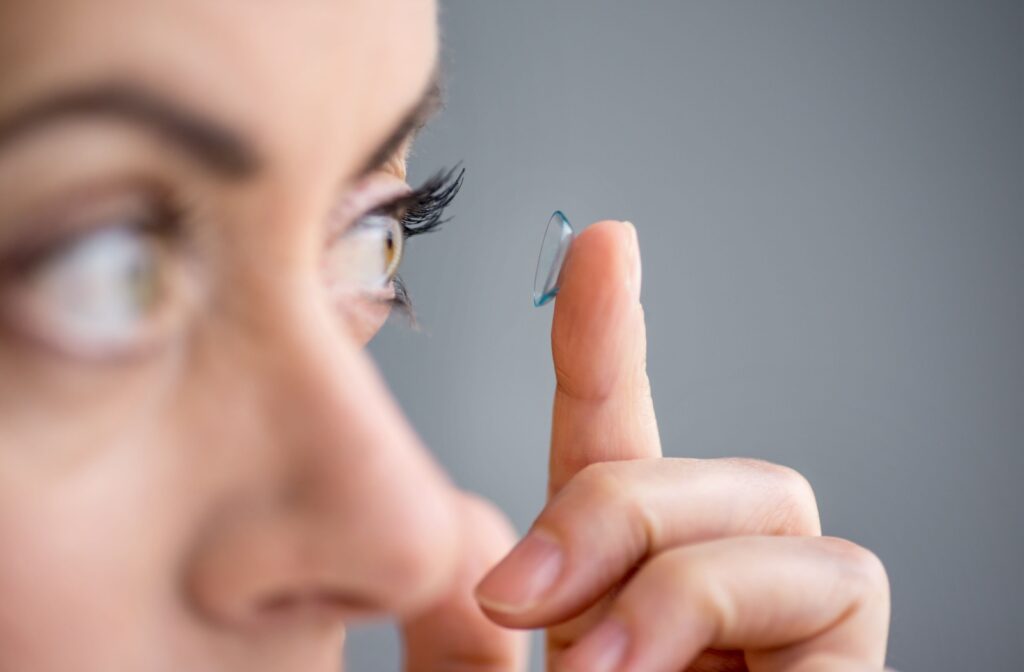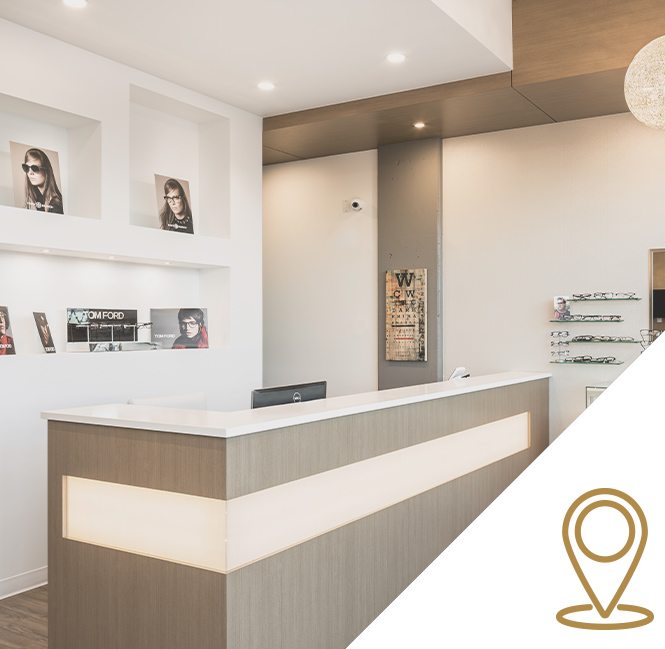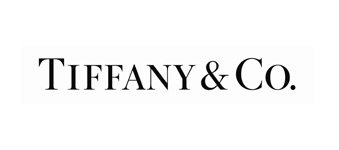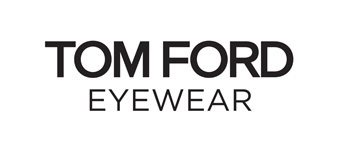For anyone who depends on corrective eyewear, switching from glasses to contact lenses can feel like a major transformation. There’s newfound convenience, an unobstructed field of vision, and the simplicity of wearing lenses without the frames. However, an important question often arises in this transition: Are contact lens prescriptions the same as glasses prescriptions? The short answer is no, they are not the same.
While both kinds of prescription correct refractive errors like nearsightedness, farsightedness, astigmatism, or presbyopia, the way glasses and contact lenses interact with your eyes is fundamentally different, and this impacts how your optometrist prescribes them.
Why Do Contact Lenses Need a Different Prescription
Though glasses and contact lenses both help you see clearly, their positions relative to your eye make all the difference. Here’s why they need different prescriptions:
- Position on the eye: Glasses rest approximately 12 millimeters from your eyes, while contact lenses sit directly on the cornea, the clear dome at the front of the eye. This difference in proximity affects how light refracts onto the retina, requiring adjustments in lens power for accurate vision correction.
- Lens Design considerations: Contact lenses must account for factors like curvature, moisture retention, and oxygen permeability, as they interact directly with the surface of your eye. Glasses don’t require these considerations, as they rest externally on the bridge of your nose.
- Prescription specifics: A contact lens prescription is more detailed. It includes precise measurements to ensure the lenses are appropriately fitted to the unique shape, size, and health needs of your cornea.
This simply means that your glasses prescription doesn’t provide the information needed to select a pair of contact lenses.
Reading a Contact Lens Prescription
Compared to a glasses prescription, contact lens prescriptions involve additional specifications. These details not only correct vision but also account for comfort and safety. Here’s a breakdown of what you’ll typically find:
- Base curve (BC): This measurement ensures the curvature of the lens properly aligns with the natural shape of your cornea for a secure, comfortable fit.
- Diameter (DIA): The diameter determines the size of the lens, which must cover the cornea adequately for proper vision correction and stability.
- Lens power (SPH): Found in both glasses and contact prescriptions, this value compensates for nearsightedness (minus values) or farsightedness (plus values).
- Cylinder (CYL) and axis: These values help correct astigmatism in both glasses and contacts, addressing uneven corneal curvature to maintain sharp, balanced vision.
- Brand or material: Contact lenses are made from a variety of materials that cater to differing needs, such as sensitivity or oxygen requirements. Your prescription specifies the brand or material best suited for your eyes.
- Expiration date: Most contact lens prescriptions expire after 1 year. Routine checks help your lenses accommodate changes in vision or eye health.
Contact lens prescriptions are both a blueprint for vision correction and a guide for protecting your eye health. Not following these parameters can lead to discomfort and even potential harm.

What Happens During a Contact Lens Fitting
If you’re planning to wear contact lenses, a proper fitting is more than just a formality. Here’s why it’s a critical step in the process:
- Corneal health assessment: The fitting allows your optometrist to evaluate the health of your cornea, checking for conditions like dryness or irritation that could affect your ability to wear lenses comfortably.
- Precision fit: Contact lenses are not one-size-fits-all. The fitting process helps your lenses match your eye’s unique curvature and dimensions, reducing the risk of slippage or discomfort.
- Customized options: Your optometrist can offer trial lenses. By trying different lens types during the fitting, we can help you find the best option based on your visual needs, lifestyle, and personal comfort.
- Risk prevention: Ill-fitting lenses can lead to complications like eye infections, corneal abrasions, or more severe conditions. A proper fitting minimizes these risks.
Ultimately, the fitting process means your transition to contact lenses can be as seamless, safe, and comfortable as possible.
Benefits of Getting the Right Contact Lens Prescription
Investing time in obtaining an accurate contact lens exam pays off in ways that go beyond just clearer vision. Here’s what you stand to gain with a properly tailored prescription:
- Enhanced comfort: A well-fitted contact lens feels natural, allowing you to wear it all day without irritation or dryness.
- Optimal clarity: Accurately adjusted lenses provide minimal distortion, delivering sharper, more consistent vision.
- Lower risk of complications: Properly prescribed lenses are less likely to cause infections or irritation, safeguarding your eye health.
- Professional guidance: Especially for first-time wearers, your optometrist offers hands-on advice about inserting, removing, and maintaining your lenses to keep them clean and safe.
Switching from glasses to contact lenses can offer unparalleled convenience and enrich your lifestyle. By ensuring your prescription is spot-on, you avoid unnecessary discomfort or frustration, making the most of this upgrade in vision correction.
Your Eye Care Matters
Whether you prefer glasses, contact lenses, or both, regular eye exams are crucial for maintaining healthy vision. Your prescription needs may change over time, and routine check-ups allow your optometrist to monitor your overall eye health, helping to detect issues early—before they impact your vision or well-being.
At Willoughby Doctors of Optometry, we believe in thorough, patient-centered care. Our eye exams and contact lens fittings are tailored to your needs, so that your glasses or contact lenses suit your vision, comfort, and lifestyle perfectly. With expertise and compassion, our team is here to guide you every step of the way.
Your contact lenses are more than just a tool for vision; they’re a gateway to a more confident, carefree version of yourself. Don’t settle for shortcuts when it comes to something as vital as your eyes.
Book your contact lens fitting with us today and experience the difference that personalized care makes!











